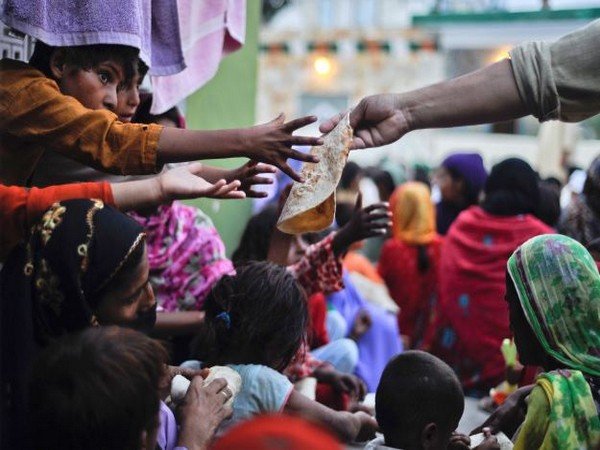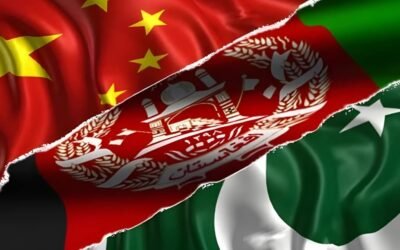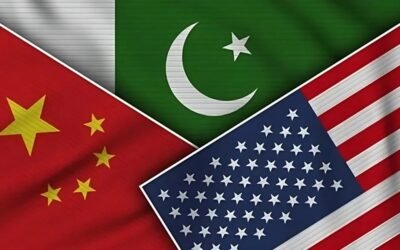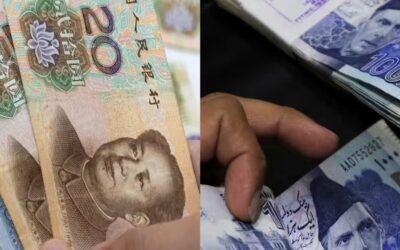Food insecurity in Pakistan is no longer a rural problem, a seasonal disruption, or a poverty-driven consequence — it is a chronic national crisis that has steadily worsened over the past decade. From wheat flour shortages to surging vegetable prices and nutritional deficits among children, the signs are widespread and alarming. Today, nearly 37% of the population experiences moderate to severe food insecurity, according to the Pakistan Bureau of Statistics. The causes, while deeply rooted in domestic policy failures and systemic inefficiencies, are increasingly compounded by global disruptions — from climate shocks, and natural catastrophes, to international price volatility and geopolitical supply chain shocks.
Pakistan’s food insecurity crisis cannot be examined in isolation. Nor can it be solved through emergency subsidies or ad hoc administrative measures. It demands structural reform, integrated policymaking, and strategic planning.
A Crisis Decades in the Making
While food insecurity has historically been associated with poverty and underdevelopment, Pakistan’s current predicament is the result of compounded failures.
1. Agricultural Mismanagement and Monoculture Dependence
Despite being an agrarian economy, Pakistan’s agriculture sector remains outdated and inefficient. Roughly 19% of GDP and 38% of employment is tied to agriculture, yet yield levels per hectare remain among the lowest in the region. Heavy reliance on water-intensive crops like wheat, sugarcane, and rice — encouraged through distorted subsidies and political lobbying — has depleted soil health and groundwater without improving food accessibility.
Pakistan also suffers from post-harvest losses of up to 40% in fruits and vegetables due to a lack of storage infrastructure and cold chains. These inefficiencies directly impact supply availability, causing price spikes and seasonal famines in both rural and urban areas.
2.Rising Input Costs and Farmer Disempowerment
Over the past five years, fertilisers’ prices have more than doubled; the plight is exacerbated by international urea shortages and currency depreciation. Small farmers, already burdened by debt and market access challenges, are priced out of the input economy. Government support programmes such as the Kissan Package offered temporary relief to the farmers but failed to deliver sustainable, long-term solutions.
3.Urbanisation and Disrupted Supply Chains
As urban populations expand — with over 36% of Pakistanis now living in cities — the pressure on food logistics has intensified. The cities lack wholesale markets, regulated pricing mechanisms, and transport infrastructure. As a result, issues like artificial food scarcity, cartelisation by middlemen, and uneven distribution emerge.
The recent flour crisis in Punjab, where hoarding and smuggling led to a steep hike in prices, is not an isolated event but a symptom of a broken procurement and distribution system.
Pakistan’s food insecurity crisis is no accident—it is the inevitable result of systemic failures in agriculture, governance, and resilience-building, now exacerbated by global disruptions.
Global Shocks, Local Consequences
While the roots of Pakistan’s food insecurity are domestic, global developments have also contributed to its exacerbation:
- Russia-Ukraine War: Both countries are among the world’s top wheat and fertiliser exporters. The conflict disrupted global supplies, leading to surging wheat and urea prices. Pakistan, which imported nearly 2 million tonnes of wheat in 2022–23, was forced to buy at inflated prices, deepening fiscal strain and reducing public procurement capacity.
- Climate Crisis and Extreme Weather Events: Pakistan ranks among the top 10 most climate-vulnerable countries. In 2022, devastating floods submerged one-third of the country, destroying over 9.4 million acres of crops. Even as international aid flowed in, the long-term impact on food availability and farmer incomes was insufficient to provide sustainable relief.
- Global Inflation and Currency Depreciation: As international food prices surged post-COVID, Pakistan’s reliance on imports became unsustainable. With the rupee consistently depreciating against the dollar, imported edible oils, lentils, and wheat became unaffordable for the average household.
These global supply shocks revealed a harsh truth: Pakistan lacks the buffers, reserves, and institutional agility to withstand external pressures on its food system.
Human Cost: Malnutrition and Inequality
The human toll of food insecurity in Pakistan is stark. According to UNICEF, nearly 40% of children under the age of five suffer from stunted growth due to chronic malnutrition. Anaemia among adolescent girls is widespread, and food quality remains inconsistent even in urban middle-income households.
Rural women face a double burden: they labour on farms while also coping with household food scarcity. In Balochistan and parts of interior Sindh, seasonal famines are an annual recurrence, not an exception.
The problem is not merely food scarcity, but access and affordability. Pakistan produces enough calories to feed its population, but the distribution is skewed, prices are volatile, and social safety nets remain leaky and politicised.
What Needs to Change?
Addressing food insecurity in Pakistan requires more than procurement drives or import adjustments. It necessitates a paradigm shift in agricultural, economic, and climate policy.
1.Diversify Crop Portfolios and Reform Agricultural Policy
Encouraging farmers to shift from wheat and sugarcane to more resilient, high-value crops like pulses, oilseeds, and vegetables would reduce import dependence and improve dietary diversity. This requires reconfiguring subsidy frameworks, offering price guarantees, and investing in research and extension services.
2.Strengthen Strategic Reserves and Local Procurement
The government must build strategic food reserves — not just of wheat but of multiple staples. Local procurement should prioritise small and medium farmers rather than large contractors. Transparent digital platforms for procurement and distribution, as initiated in Punjab, can reduce leakages.
3.Invest in Cold Chain Infrastructure and Urban Market Reform
Public-private partnerships should focus on expanding cold storage, refrigerated transport, and regulated wholesale markets. Urban market reform—digitisation, price monitoring, and consumer cooperatives—can help stabilise prices and reduce exploitative middlemen
4.Integrate Nutrition into Food Policy
Government schemes must integrate nutrition goals, especially for children and women. School feeding programmes, fortified staple initiatives, and awareness campaigns can combat food insecurity.
5.Climate-Resilient Agriculture and Early Warning Systems
Pakistan needs to embed climate adaptation into its agricultural planning. This includes drought-resistant seed varieties, flood-resilient cropping calendars, and satellite-based early warning systems.
6.Rebuild the Ehsaas Programme as a Nutrition Security Tool
Ehsaas, Pakistan’s flagship social protection programme, can be repurposed to deliver nutritional support. Conditional cash transfers linked to child health and food purchase tracking can directly address household-level food insecurity.
Pakistan’s food insecurity is an outcome of policy inertia, systemic inefficiencies, and global exposure without domestic resilience. With intensifying climate changes and economic instability, the margin for delay has evaporated. If pragmatic steps are not taken now, the next food crisis will be a humanitarian catastrophe. The world is grappling with food security challenges, but Pakistan’s stakes are uniquely high. Navigating this requires integrated reforms — not just in agriculture, but in governance itself.







